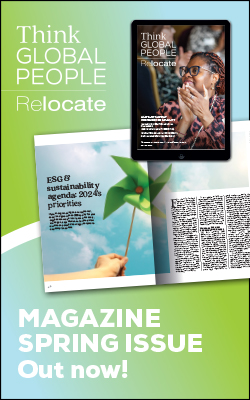Boom times for Middle East’s international schools
Economic challenges notwithstanding, the Middle East’s international-school market is thriving, powered by increasing demand from both expat and local families, says Nalini Cook, of ISC Research.

Dubai British School, UAE
International schools in the UAE
The United Arab Emirates (UAE) is the leading country in the Middle East for English-medium international schools, with 601 schools meeting the learning needs of almost 605,000 students. The emirate has lost its position as the global leader in international schools to China, which now has 638, but retains its position as the world leader for the number of students studying at international schools.In the UAE’s premium international schools (those that charge the highest fees and are accredited by, and members of, leading international-school associations), the leading student nationality is Emirati (17 per cent), followed by British, Indian and American. The UAE, as a whole, is dominated by expatriates, who make up 84 per cent of the total population. A significant number are skilled workers holding senior positions in companies, and it is from them and their families that much of the demand for international schools is coming.The most popular curriculum at international schools in the UAE is a British one, delivered by almost half (46 per cent) of the schools. The UAE, as a whole, is seeing significant developments in the construction and real-estate sectors, which will continue to attract more expatriates. As a result, Dubai and Abu Dhabi have several new international-school developments in the pipeline.Dubai leads the region, and the world, as the city with the most international schools. As the new academic year began, it had a staggering choice of 295 international schools. The city continues to flourish despite the decline in the oil and gas market that has led to the repatriation of many Western expatriates. Most of the good schools are maintaining capacity, but competition between schools is ever tougher.Related news:
- International school growth in Middle East: focus on quality
- The rapid growth of international schools in the Middle East
- Growth in Turkey’s private schools fuels demand for teachers
More international schools have opened in the mid-market sector, where fees are lower. These are proving increasingly popular for expatriate families who have experienced a reduction in their salary and benefits packages because of the economic downturn, forcing them to look at more affordable education options for their children.
International schools in Saudi Arabia
Saudi Arabia ranks second in the Middle East, and seventh in the world, for number of international schools, with 244. It is second to the UAE in enrolments, with 288,500 students.With 30 per cent of Saudi Arabia’s population under the age of 15, and the country facing the persistent challenge of a declining energy sector, the Saudi government has called for improved schooling, to prepare more of the country’s workforce for a diversified and knowledge-based economy.ISC Research predicts that, as a result of these factors and the recent announcement that the Saudi government would allow full foreign ownership of education companies, the number of schools will increase. This is on top of an announcement earlier in 2017 that 100 new international schools would be established in the country in the next five years.Currently, local Saudi children comprise 43 per cent of students in the mid and premium sector of the international-schools market in Saudi Arabia. The leading expatriate nationalities attending the country’s English-medium international schools are Egyptian, American, British and Pakistani.A US-oriented curriculum, offered by 53 per cent of the international schools, is the most popular. A British curriculum is delivered by 26 per cent of the schools. A hundred and fifty-six international schools are through-schools, offering learning from the ages of thee to 18 at the same school.International schools in Qatar
Qatar is currently the Middle East’s third-leading country for international schools, with 165, between them enrolling over 126,000 students. Many schools in Qatar have seen the departure of a large number of Western expatriate families as a result of job losses related to the petroleum industry.School fees in Qatar remain relatively high for the region, at an average of $9,235 per year. Nevertheless, enrolment has remained strong in the best schools because of waiting lists, though some schools have seen their capacity fall.However, Qatar is investing extensively in infrastructure projects over the next few years; ISC Research is aware of more than 20 new schools in the planning stages.Relocate Global's Guide to International Education & Schools 2017 is packed with information on education around the world with expert tips for those relocating and the professionals supporting them. Access your digital copy here.
For related news and features, visit our Education & Schools section.Relocate’s new Global Mobility Toolkit provides free information, practical advice and support for HR, global mobility managers and global teams operating overseas.
 Access hundreds of global services and suppliers in our Online Directory
Access hundreds of global services and suppliers in our Online Directory
©2024 Re:locate magazine, published by Profile Locations, Spray Hill, Hastings Road, Lamberhurst, Kent TN3 8JB. All rights reserved. This publication (or any part thereof) may not be reproduced in any form without the prior written permission of Profile Locations. Profile Locations accepts no liability for the accuracy of the contents or any opinions expressed herein.





























